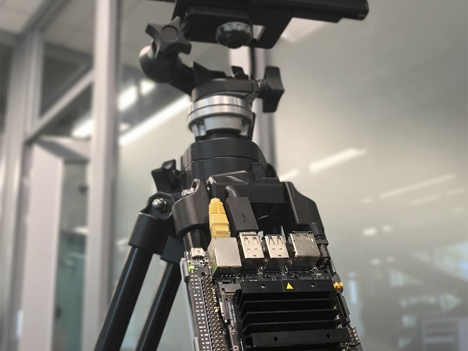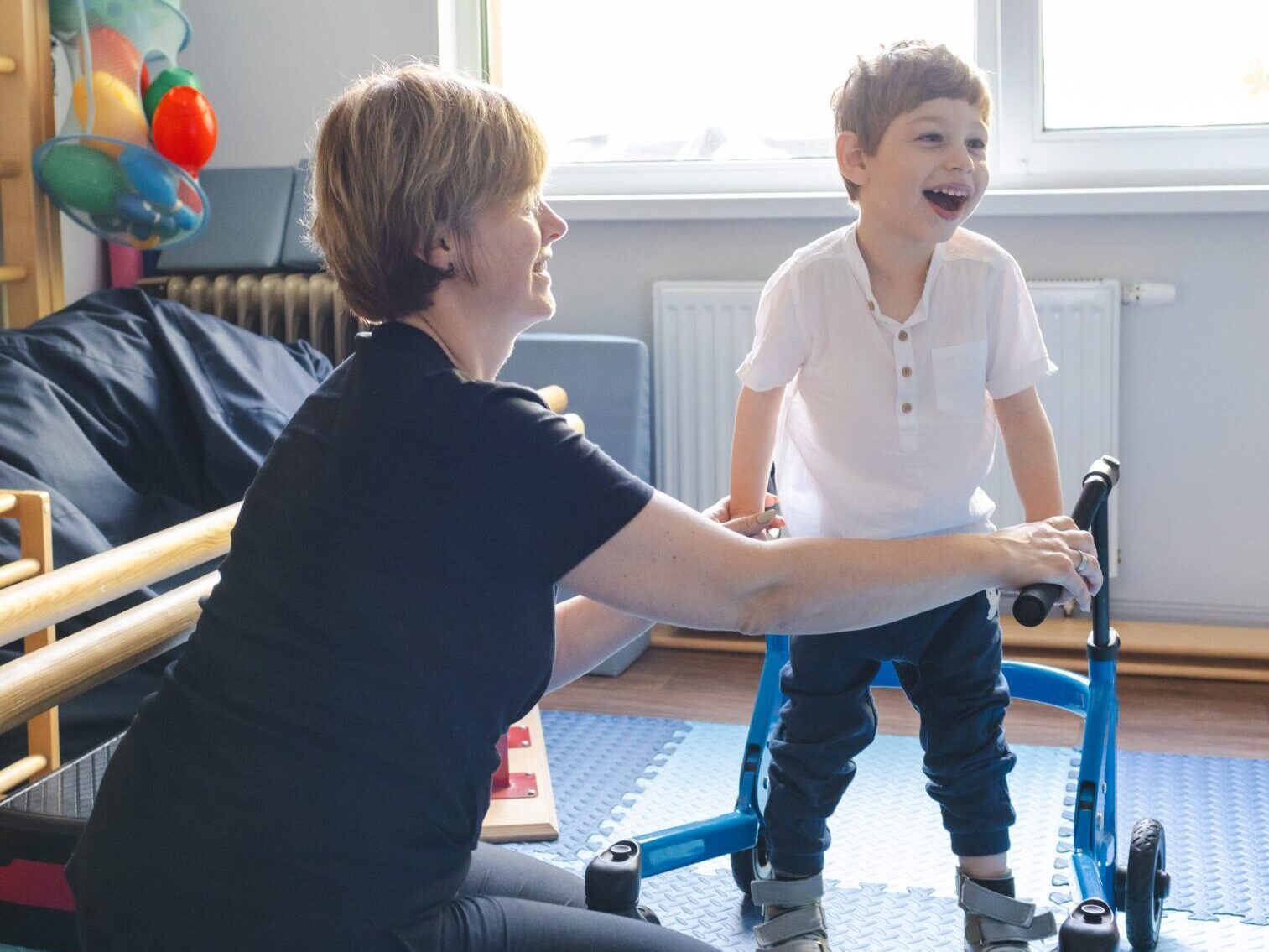
SATCo
- Use a height-adjustable bench, such as the Leckey Therapy Bench with back support and pelvic cradle. Alternatively, if you do not have access to a Leckey Therapy bench you can use a regular therapy bench, with a stable block to offer support under the child’s feet and you can provide back support with your own body/knee. Stabilising the pelvis is described below.
- The feet are supported (if appropriate for age and developmental stage)
- Start by testing head control) and move progressively downward.
- Use manual support, following the landmarks shown, as you assess control at each segment.
- The static, active and reactive tests are usually completed at each segment before progressing to the next segment. *Remember that Reactive control is not tested at the Head segment!
- Ensure a quiet and distraction-free environment.
- Offer frequent breaks.
Make it fun! Use toys or games that motivate your patient best.

SATCo is best if recorded and then the analysis done from the recording: this also provides a visual record.
oSATCo
- This requires two cameras
- Connect the cameras to a laptop/jetson device using a wire with a USB connection.
- Use your device (phone, tablet or laptop) to connect to the QuantCoApp* WiFi hotspot, this will open a simple video recorder.
- Press the red record button to start the SATCo recording.
- After completing the test, press stop to end the recording, this will create a file from your SATCo session.
- *Naming process to be confirmed later*
- Press the analyse button to produce an automatic analysis of your patient’s SATCo. This will provide segmental data of control demonstrated and control not demonstrated. The app will provide evidence in the form of cropped video clips for each segment.

SATCo Background
Head and trunk control are directly related to gross and fine motor function.
Gross motor function
Postural Stability: Head and trunk control are essential for overall stability with mobility. Without effective postural stability, everyday activities such as sitting, standing, and transitioning between positions is challenging and energy-consuming.


Gross motor function
Independence: Deficits in head and trunk control can limit participation in daily activities and affect quality of life. Rehabilitation strategies aim to improve these areas to enhance independence once the specific trunk control deficit is known.


How is SATCo different from other tests?
- Segmental Approach: Unlike traditional assessments that evaluate the trunk as one single unit, SATCo considers the trunk segmentally, allowing precise identification of the segment at which control is compromised.
- Provides a structured and repeatable method for assessing control at each trunk segment (i.e. head, upper thoracic, mid-thoracic, lower thoracic, upper lumbar and lower lumbar).
- Focus on Rehabilitation Goals: Helps clinicians create targeted interventions based on improving segmental control. In turn this leads to functional gains.
Precision analysis
⇣
Focussed trunk control training
⇣
Improvement in function

What SATCo is and what it is NOT?
What SATCo IS:
- A measure of trunk control status on a segment-by-segment basis
- Assesses static, active and reactive control at each segment (Note: Reactive control is NOT assessed at the head segment)
- Enables identifying and tracking of improvements over time.
What SATCo is NOT:
- A test of function.
- A test of sitting balance
Who is the SATCo for?
- Target Population: SATCo is validated for children with neuromotor disabilities that affect postural control, such as:
- Cerebral palsy
- Undiagnosed developmental delays
It has also been used for children with neuromuscular disease, such as Spinal Muscular Atrophy (SMA) and Duchenne’s Muscular Dystrophy (DMD)

What is Neutral Vertical Posture (NVP)?
Definition: NVP refers to the upright alignment of the body, where none of the joints of the neck or trunk are at end of range. In NVP the ear is vertically above the shoulder, which is positioned vertically above the hip.

What is the value of NVP?
The joints of the head and trunk are under true active control and NVP does not permit the child to use compensatory strategies e.g. resting on bony end stops.
NVP tests and trains multi-directionally, children may control movement in each direction available at respective joints. e.g. from NVP, the vertebral joints can flex, extend, laterally flex and rotate.
The alignment in NVP also requires minimal energy expenditure from the child which is beneficial when training control.

Manual Support in SATCo
Correct manual support is a critical aspect of the SATCo assessment providing:
A stable, horizontal pseudo-base directly below the segment being tested. This enables clinicians to isolate control testing to a specific trunk segment without compromise from instability in other areas.
It can be unclear which segment is being tested if the support provided is not horizontal.
Fingers and thumb should both be positioned at the top of the segment being supported, the landmarks are the same for all children irrespective of their height. But remember that the ribs will not be fully elongated in very young infants, so go by vertebral identification.
If the supported segment is moving, it will not be possible to determine the control status of the segment under test.
Another person touching or holding the child, above the manual support, invalidates the test.
Incorrect support can limit the child’s ability to achieve neutral vertical alignment. e.g. pulling backwards
The child becoming bored or distracted by can lead to misalignment. If transient, this is not a concern but several seconds or more will invalidate that test.
If the child uses arm support, such as propping/putting a hand down when this is not actually needed, this invalidates assessment of that part of the SATCo.
Poor technique, inconsistent delivery of nudges or nudges given when the child is not aligned, will invalidate the Reactive test at that segment.




